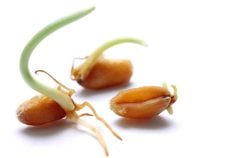Genetically modified crops will prevent future wars, says an author and science communication specialist.
“Agricultural biotechnology can bring peace as well as plenty,” Julian Cribb, principal of Julian Cribb &Associates, told delegates attending the 10th Agricultural Biotechnology International Conference in Saskatoon.
He said a lack of food, land and water has been at the heart of modern conflicts in Darfur, Rwanda, Eretria and the Balkans. GM crops offer the only real solution to a looming food crisis that threatens to set off several more wars, he added.
Read Also

New Alberta funding for program hopes to further unlock agritourism industry in province
Alberta Farm Fresh Producers Association is launching a new initiative thanks to $300,000 of provincial funding to bolster Alberta’s smaller scale family farms and agritourism sector.
“It’s now time for the world to understand that agricultural science is defense spending,” said the author ofThe Coming Famine,a book about the looming global food security crisis.
The United Nations predicts that a rapidly expanding world population will need twice as much food by 2050 than is now produced.
Cribb said that represents a monumental challenge because a large number of constraints will make it exceedingly difficult to feed the world’s expected 9.2 billion population.
“This isn’t a simple problem susceptible to quick fixes. It is a wicked problem,” he said.
Cities will be consuming more than half of the world’s available fresh water by 2050, he said, which means farmers will have to double production using less than half the water they have today.
And they will do so on a shrinking base of arable land. The United Nations’ Food and Agriculture Organization, says 24 percent of the earth’s surface has suffered significant degradation and each year a further one percent is damaged.
Urban sprawl isn’t helping matters with dozens of cities containing more than 20 million people each expected by 2050.
“The global area of good soil buried under tar and concrete will exceed the land mass of China,” Cribb said.
Soil nutrient deficiencies, collapsing fisheries and the increased frequency of crippling droughts will make it harder for farmers to feed the world. Experts anticipate yield-sapping droughts will be four times more prevalent by 2100 than they are today.
Cribb said farmers face a tall order to double production given those constraints, but it is doable if governments double the $40 billion spent on agricultural research annually by cutting back on the $1.5 trillion they spend on weapons annually.
Researchers are using biotechnology to develop higher yielding crops that can grow with fewer inputs and in harsh climates. However, governments in developing countries are spending only 1.8 cents of every science dollar on food research.
John Hamer, managing director of Burrill &Company, a venture capital firm specializing in biotechnology, said venture capital funds have invested $150 million in agricultural biotechnology in the first half of 2010.
“This is an area of significant under investment,” he told conference delegates.
Saskatchewan premier Brad Wall appears to be listening.
He announced at the conference that the province is investing an additional $5 million in the agricultural biotechnology sector on top of the $17 million budgeted for agriculture research in 2010-11.
“We have to continue in this province as a global leader in the field of biotechnology to meet these demands for abundant high-quality food,” he said.
Cribb said farmers aren’t the only ones who have a role to play in making sure everybody eats. Consumers need to stop wasting food.
A typical western family throws out an estimated 2,600 of the 4,600 calories of food produced for it every day.
“Our grandparents, who understood that thrift is another word for survival, would say that we’re idiots and they would be right,” he said.
Cribb wants schools to introduce a food year, where every subject would be taught with a food focus.
“It will teach the coming generation to respect their food,” he said.















